How to protect yourself against osteoporosis: From your teens to your 40s and older
Advertisement
Women
How to protect yourself against osteoporosis: From your teens to your 40s and older
Osteoporosis is more mutual in women and tin occur at any phase, experts say. To mark World Osteoporosis Mean solar day on October 20, CNA Women looks at how you can treat your bones in every phase of your life.
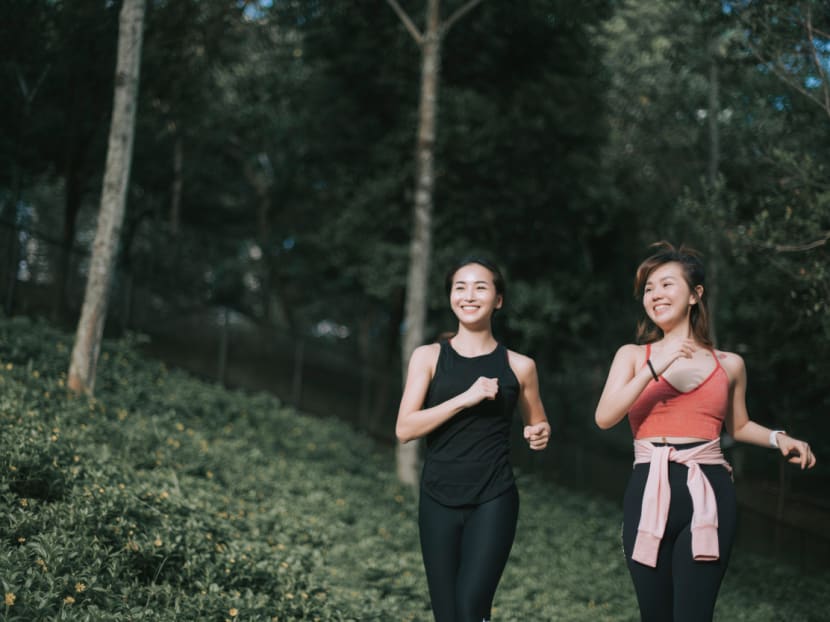
Osteoporosis tin occur at any stage of a adult female'south life and prevention strategies should be practical early, co-ordinate to experts. (Photograph: iStock/Edwin Tan)
When yous think nearly your physical wellness, how oft does bone health occur to yous? Not often, we imagine.
"Few women call back of bone strength or mass until later in life or when they sustain fractures associated with low bone mass," said Dr Lim Lian Arn, an orthopaedic surgeon at Gleneagles Hospital.
"By that time, however, it is already, in a sense, tardily in the game," he said.
This condition of reduced os mass and quality, leading to increased fracture risk, is what describes osteoporosis.
And it is more mutual in women.
Over the next two decades, a staggering 319 million people to a higher place the historic period of 50 from the Asia-Pacific are projected to be at high risk of osteoporotic fracture, according to statistics cited by the Asia Pacific Consortium on Osteoporosis, which is launching what it describes as a "world-kickoff, interactive, educational healthcare" resource for physicians to foster all-time practise osteoporosis care in the region.
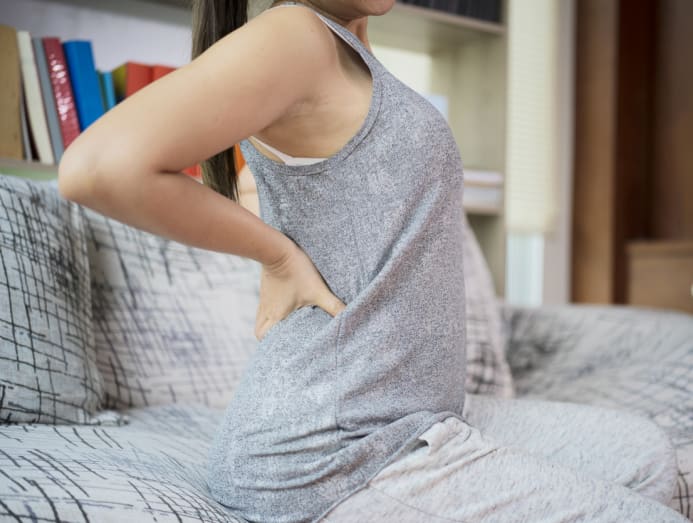
More than 50 per cent of the globe'southward hip fractures are expected to occur in the region by 2050, information technology said, calculation that Singapore currently has i of the highest numbers of hip fractures globally.
According to Dr Chew Chee Kian, an endocrinologist at Tan Tock Seng Infirmary (TTSH), incidence rates of hip fractures increased 5-fold in Singapore women betwixt the 1960s and 1990s, amid the country'south "rapidly ageing population".
Knowing the pattern of bone mass changes beyond a woman's lifespan can influence the strategies women use to reduce their risk of osteoporosis, and these take to be put into activity earlier, not later.
"Osteoporosis can occur at any stage of a adult female's life, although it is more than mutual in postmenopausal women," said Dr Chew. To marker World Osteoporosis Solar day on Oct 20, nosotros wait at how bone mass changes in women at every phase of life and what lifestyle habits you can change or adopt for optimum bone health.
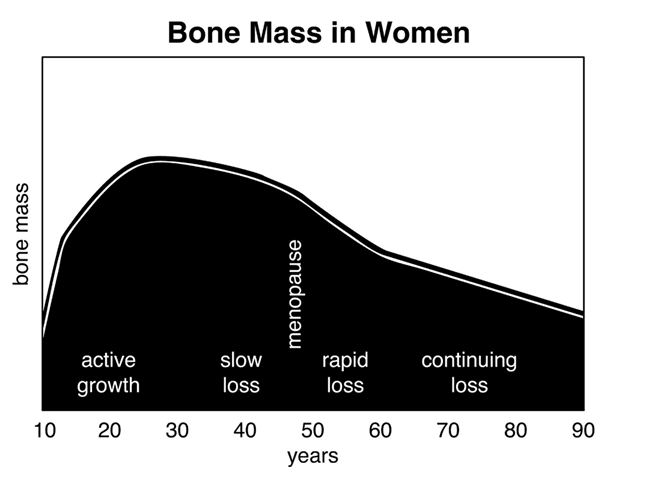
IN Adolescence AND YOUTH
- Ensure diet is rich in calcium and vitamin D
- Avoid caffeinated drinks
- Engage in high-impact exercise
Optimal adult bone mass is genetically predetermined and for women, this is gained generally between the ages of 12 and twenty, said Dr Chew. "Adolescence represents a window of opportunity to maximise bone gain," he said.
What to consume: To promote rapid os accrual, girls between the ages of ten and 18 should consume 1,000mg of calcium a day, according to the Health Promotion Board (HPB). This can be obtained from dairy products such as milk, yoghurt and cheese, too equally dark green vegetables, soya products and calcium-fortified soya milk, said Dr Chew.
To promote amend absorption of calcium, girls should as well ensure acceptable vitamin D intake. The HPB's recommended daily absorption of vitamin D is ii.5mcg for those anile seven and above.
This can be obtained through adequate sun exposure – Dr Chew recommends being exposed to sunlight for about 10 minutes to 15 minutes daily between 10am to 3pm – or eating foods that are enriched with vitamin D, including oily fish like salmon and sardines, eggs and liver.
Girls should avert caffeinated drinks, including colas and energy drinks, because caffeine increases urinary and faecal calcium losses, said TTSH dietitian Clarissa Tai.
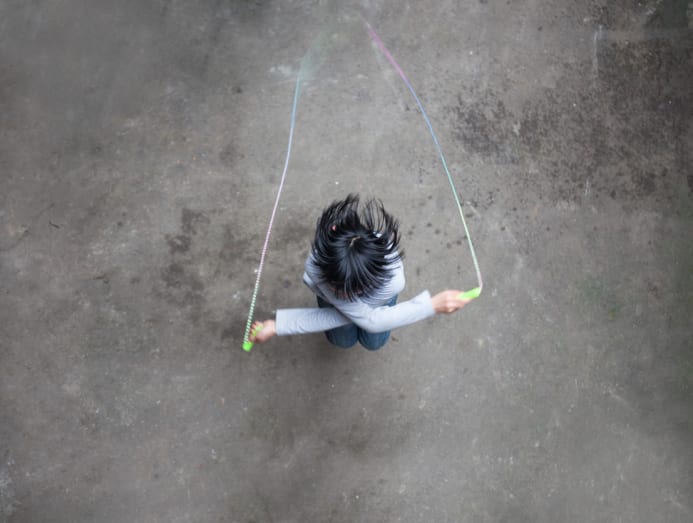
What to do: A 2022 report establish that more than 80 per cent of girls aged between xi and 17 were physically inactive, said Dr Lim. "We doubtable that since that time, that per centum has not changed significantly and is something we need to go on an eye on."
This menstruation is crucial as a 10 per cent increment in peak os mass in adolescents tin reduce the take chances of osteoporotic fractures in adults by 50 per cent, said Dr Lim.
Hence, exercise and activity should exist encouraged, in particular high-impact movement, because "the more you stress the bone, the more it responds to that stress by condign stronger", said Dr Lim.
Exercises that stress the bones and strengthen them include running, skipping and trampolining.
A x% increment in peak bone mass in adolescents can reduce the chance of osteoporotic fractures in adults past 50%.
FROM YOUR 20S TO 40S
- Adjust calcium and vitamin D intake appropriately
- Cut down on salty and candy food
- Avoid smoking
- Limit alcoholic drinks to one a day
- Limit caffeinated drinks to three cups a day
Bone mass gain begins to slow downwards when a woman turns 20 and concluding top bone mass is attained at the age of thirty. After this, it remains largely stable, doctors told CNA Women.
During this menstruum, women typically experience lifestyle changes and milestones that may impact the preservation of their bone mass, such as largely sedentary work and the adoption of habits such every bit booze drinking and smoking.
Many women will also experience pregnancy in this period. The mum's calcium is transferred to the foetus for os development mostly in the second and third trimesters of pregnancy, said Dr Chew. Calcium is as well excreted in breast milk during lactation.
"High calcium demand, coupled with hormonal changes during pregnancy and lactation, make women susceptible to bone loss and subsequent osteoporosis later in life.
"After commitment and cessation of lactation, bone loss reverses and recovery occurs," Dr Chew added.
What to swallow: Continue to eat foods rich in calcium during this time, with the recommended intake being 800mg a day. If you're significant or lactating, the recommended intake for calcium is i,000mg daily.
The recommended daily intake for vitamin D also increases due to this, to 10mcg. At this stage, yous may also take calcium and vitamin D supplements but only if yous're unable to obtain the adequate amounts from your nutrition and dominicus exposure.
Protein is also essential for good musculus function and wellness, which helps strengthen the bone. Tai said adults below the age of fifty should consume 0.8g/kg of torso weight per day. Exist careful about consuming besides much protein because this may crusade calcium loss, Dr Chew warned.
During this catamenia, cut downwards on salty foods every bit much as possible as salt tin inhibit calcium absorption. Tai recommends limiting it to less than 2,000mg of sodium a day, or less than one teaspoon of salt a day.
To achieve this, showtime by comparing nutrient labels and purchasing products with lower table salt content. Yous can also reduce your intake of broths or soups and flavour foods with spices or pepper when cooking.

A nutrition loftier in refined sugars and processed food has also been associated with lower bone mineral density, said Tai. Opt for unsweetened or reduced sugar drinks, only consuming carbohydrate-free sweets and replacing canned or stale fruit with fresh fruit.
Women should too limit alcoholic drinks to one a mean solar day equally these can reduce os formation and calcium assimilation. Similarly, java, tea and soft drinks should be express to three cups a solar day because the caffeine from these tin crusade calcium loss.
What to do: Compared to physical inactivity, regular weight-bearing exercises (or workouts that go along y'all on your feet, with your bones supporting your weight) take been shown to increase bone proceeds, said Dr Chew. At a minimum, women in this age grouping should commit to simple exercises like brisk walking, jogging and skipping.
Avoid smoking, doctors say, as it causes bone loss and reduces the production of oestrogen, which helps regulate bone turnover and maintain a healthy os mass.
IN YOUR 50S AND ABOVE
- Consume more calcium, complemented by acceptable sunlight
- Swallow more than protein
- Ensure diet includes sources of magnesium and vitamin K
- Practise exercises that promote residuum
With the onset of menopause effectually the age of fifty, bone loss accelerates due to a marked decrease in oestrogen levels, said Dr Chew.
Past 10 years after menopause, at around 60 years, oestrogen-related bone loss slows down and age-related bone loss predominates, he said. The rate of loss of os mass continues at that accelerated pace until the end of life, doctors said.
What to eat: Women older than 50 may begin consuming ane,200mg of calcium per day. This tin can come up from a diversity of foods including low-fat milk, fish with edible bones like sardines and mackerel, baked beans and beancurd.
As vitamin D is needed for improve calcium absorption, women in this age grouping should continue to ensure adequate sun exposure, around thirty minutes daily, said Tai.
Some groups of individuals, including the frail elderly as well as those who wear more than veiled habiliment or have a deeper skin tone may have minimal exposure to sunlight and may benefit from taking vitamin D supplements. This should not exceed 100mcg per 24-hour interval, said Tai, as excessive intake can lead to symptoms like diarrhoea, nausea, joint hurting and headaches.
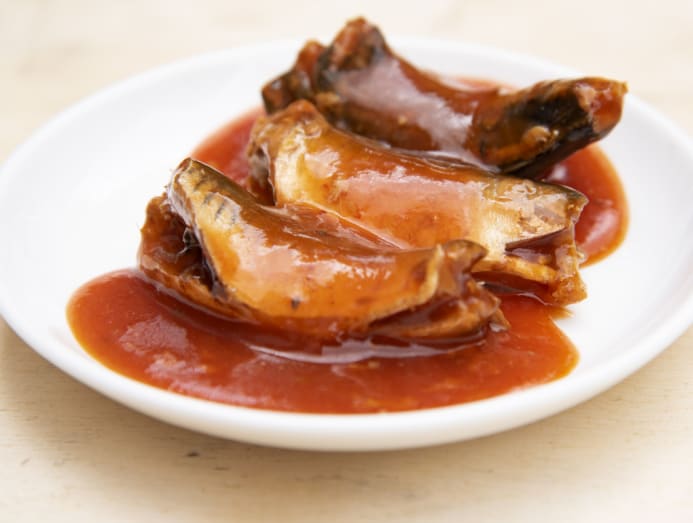
During this period, women may begin to consume more protein, around 1.2g/kg body weight per day. However, you should consult your doctor first as these recommendations may need to be adjusted if y'all have certain medical conditions, such as chronic kidney disease.
Minerals such every bit magnesium and vitamin Thousand may play important roles in bone health, said the dietitian. Low magnesium levels take been associated with increased fractures and lower bone mineral density, while vitamin K is required in the formation of bone proteins.
A diet loftier in vitamin K is associated with a lower hazard of fracture and enhances os mineral density in older people, she said. Consuming green leafy vegetables, nuts and seeds, wholegrains and yoghurt all help to ensure that 1 is getting adequate amounts of these nutrients, she added.
What to do: For older women, Dr Chew recommends exercises that strengthen the core and promote balance as these prevent falls. Such exercises include tai chi, qigong and yoga.
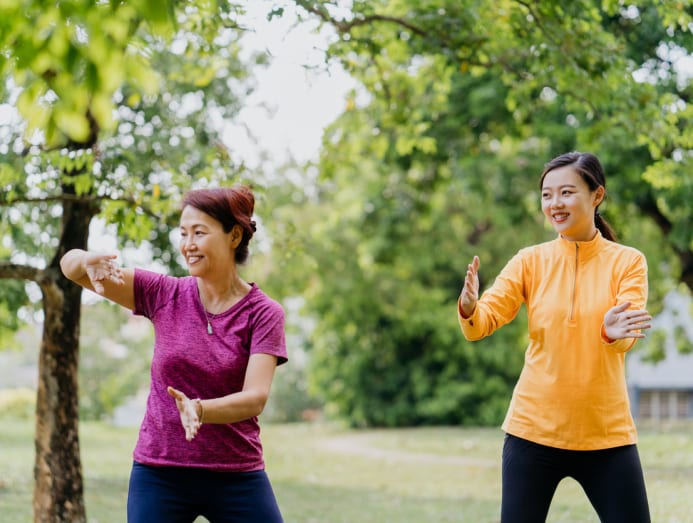
CNA Women is a new section on CNA Lifestyle that seeks to inform, empower and inspire the modernistic adult female. If y'all have women-related news, issues and ideas to share with us, email CNAWomen [at] mediacorp.com.sg .
Recent Searches
Trending Topics
Source: https://cnalifestyle.channelnewsasia.com/women/osteoporosis-women-prevention-diet-exercise-tips-285036


0 Response to "How to protect yourself against osteoporosis: From your teens to your 40s and older"
Post a Comment